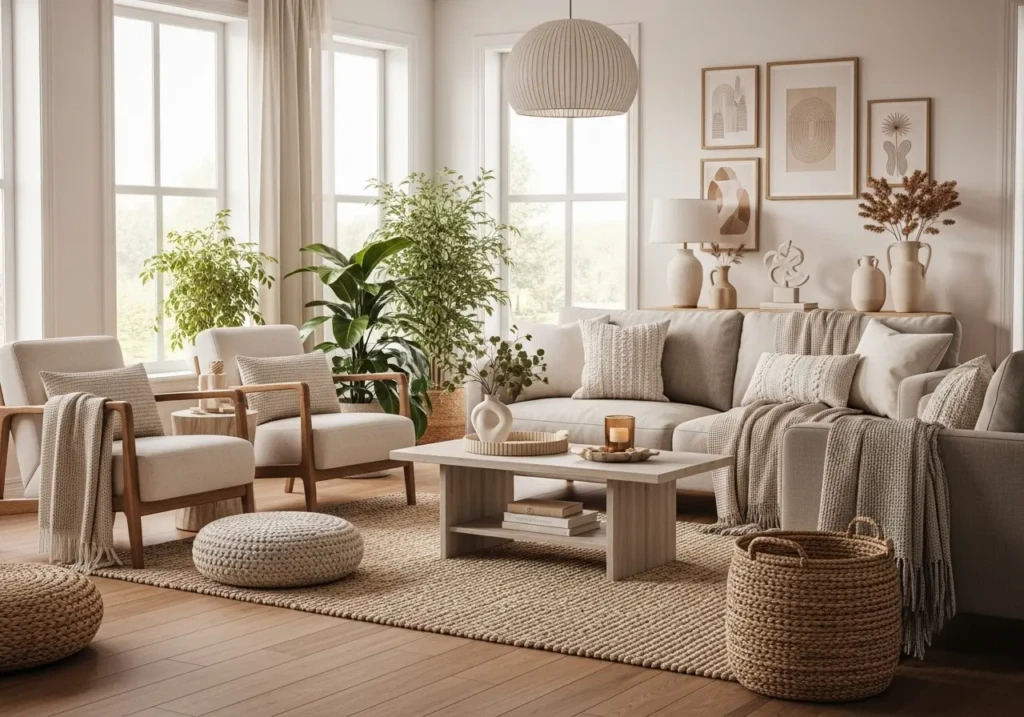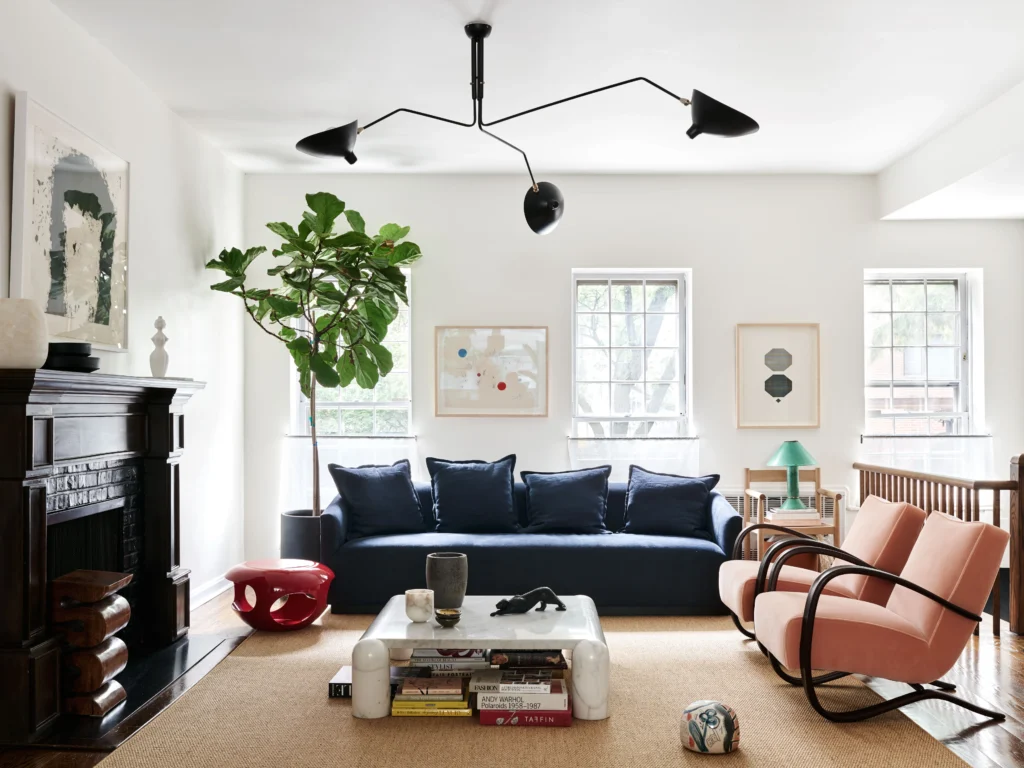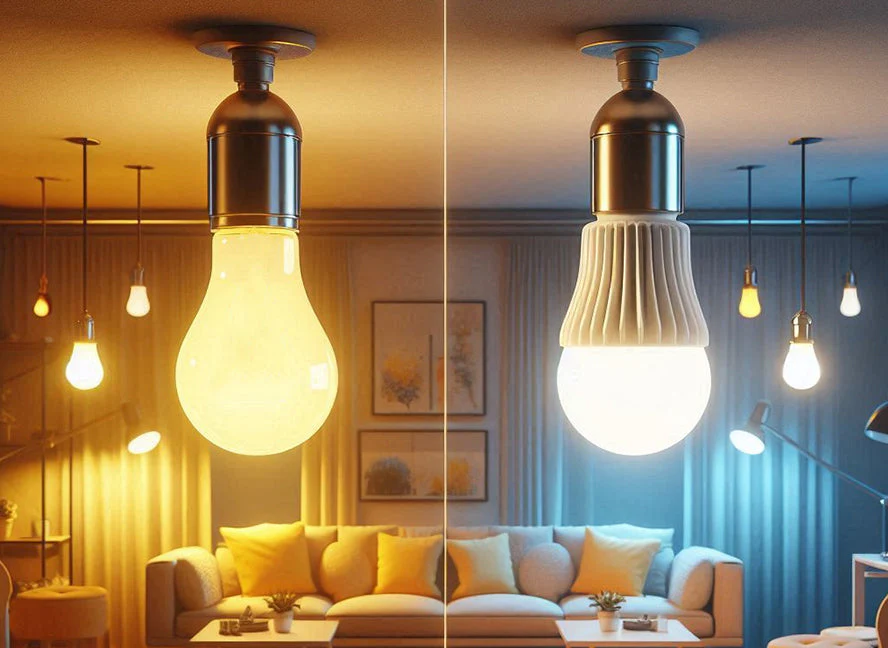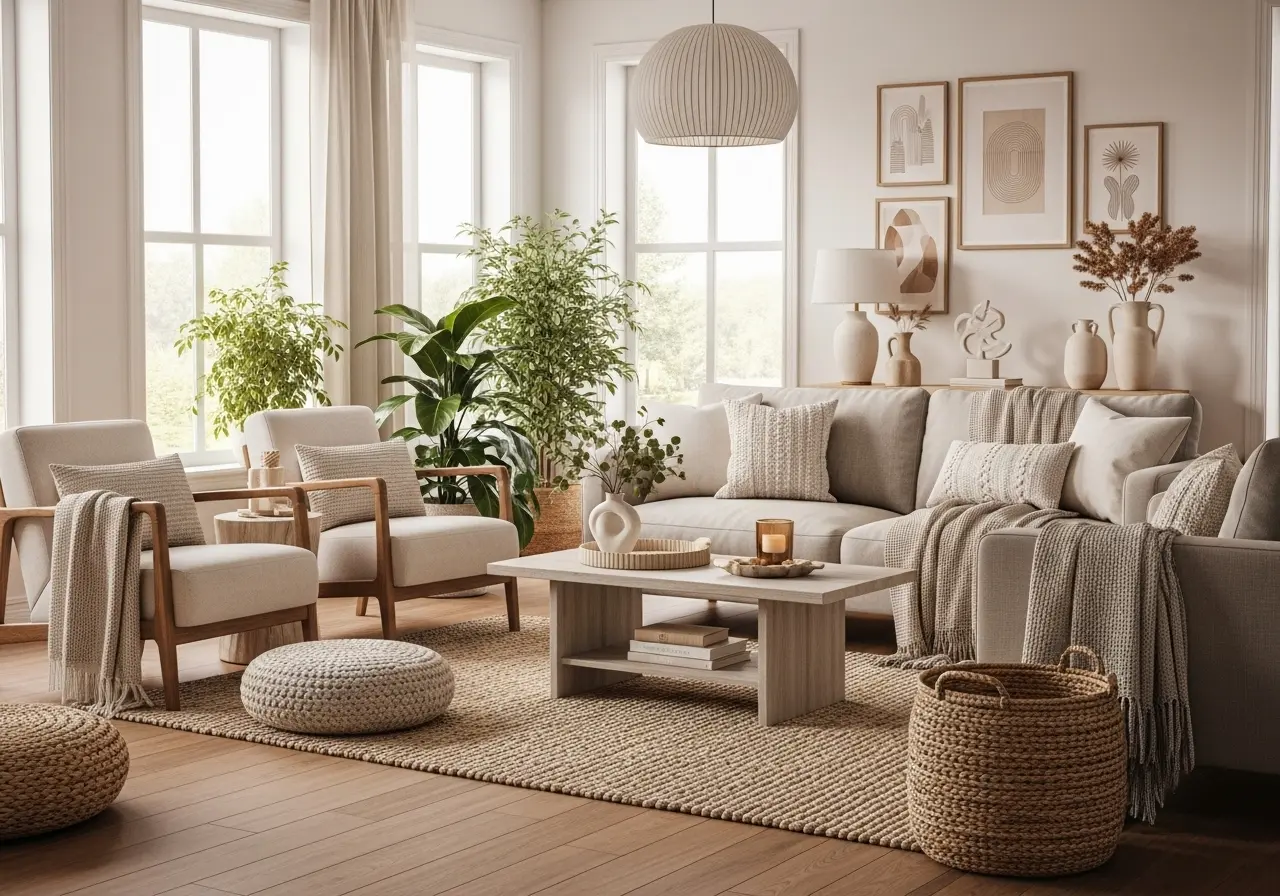
I’ve spent years tweaking my spaces—moving chairs an inch, switching pillows, and learning that the right light bulb can make a sink look glamorous. This is my practical, honest way of creating a home that feels like you. I don’t use complex language or design snobbery; I simply focus on what works.
I Start With Feeling, Not Labels
I begin by asking how I want the room to feel: warm, calm, or inviting.
I write only three words—maybe calm, earthy, and soft.
Every choice follows those words: paint, fabric, metal, even the door handles.
Design labels like “boho” or “mid-century” can help later, but I never start there.
I prioritize feeling over style.
Quick move: I collect six to eight photos that match those words.
I notice repeating shapes, colors, or textures—and let those patterns steer me.
Measure Like I’m Buying Jeans Online
A perfect couch that doesn’t fit ruins everything.
I sketch the room on paper or an app, marking doors, windows, and outlets.
Then I note the maximum width, depth, and height for big pieces.
Shopping inside those limits keeps chaos out.
My measuring guide
- Sofa-to-table: 16–18 inches
- Rug: front sofa legs on it
- Art above sofa: ⅔ sofa width, center ≈ 57 inches from floor
- Dining clearance: ≥ 36 inches from table edge to wall
Not strict rules—just comfort math.
Colors That Cooperate
I keep one main shade, one support, one accent, and a neutral base for home interior design .
I test paint on poster boards and move them throughout the day.
Morning light is honest; evening light changes everything.
I commit only when we mutually agree.
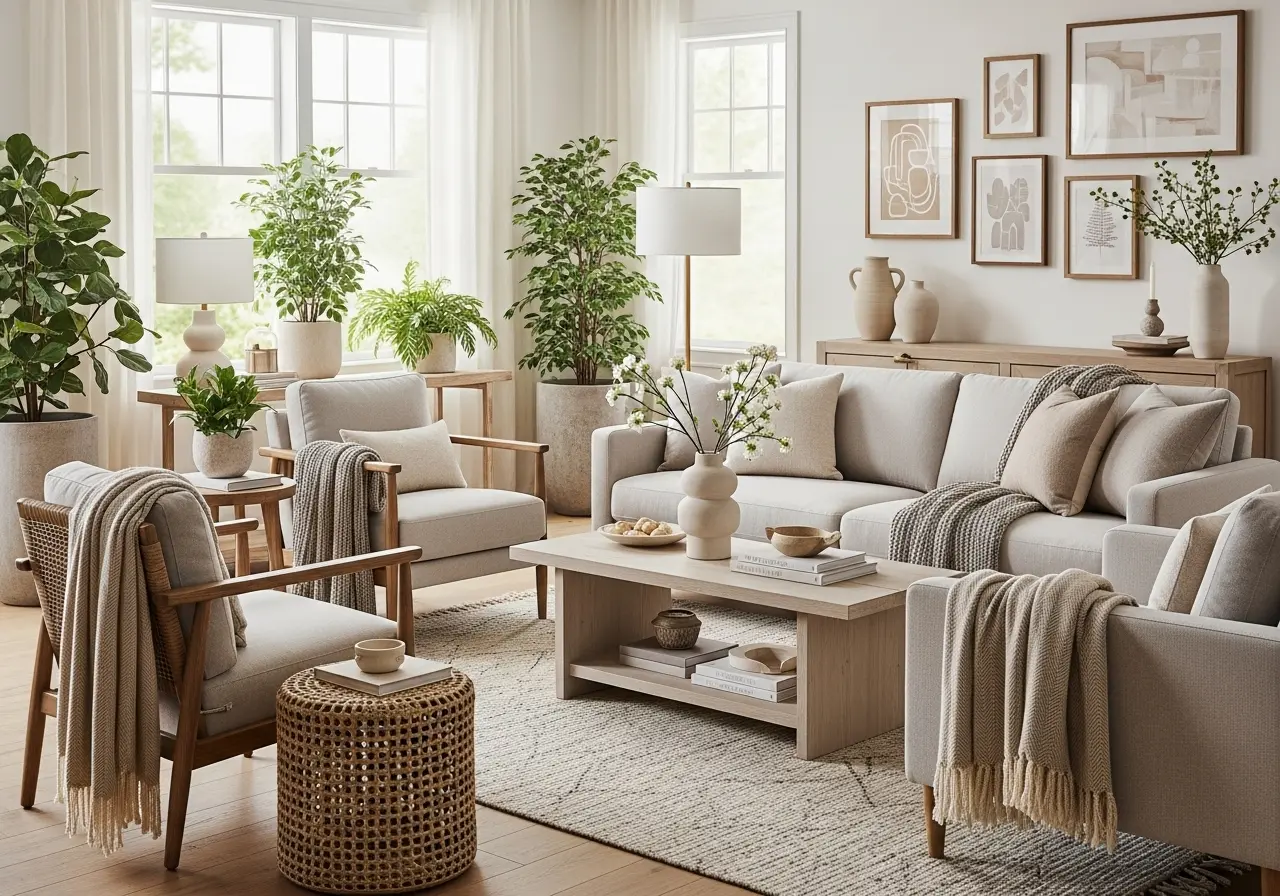
Cheat sheet
- North rooms glow with warm tones; south rooms suit cool ones.
- Orange floors and pink-beige walls clash unless I want drama.
- Metal counts as color—two finishes feel balanced, and three only if subtle.
Lighting That Flatters, Not Fights
Ceiling lights help with chores, not faces.
Every space needs three layers:
- Ambient: ceiling or flush fixtures on dimmers
- Task: lamps for desks, counters, or reading
- Accent: picture lights or tiny shelf lamps
Under-cabinet lighting transforms the kitchen—small glow, big mood.
I choose warm white bulbs (2700–3000 K) in living zones and neutral (3000–3500 K) where I work.
Matching color temperature keeps walls consistent.
Layout That Lets Me Live
Before shifting furniture, I draw walking paths.
Where do I enter, sit, and drop bags?
If movement looks cramped, I fix it on paper first.
Flow beats symmetry every time.
Living area: Seats face a focal point—a view, art, or TV.
Each seat deserves a reachable table (no yoga for drinks).
Dining zone: Tight space? Round table.
A low-pile rug ensures that chairs glide smoothly.
living room furniture
Each room gets one hero item.
If the sofa leads, the tables stay quiet.
If the table shines, chairs step back.
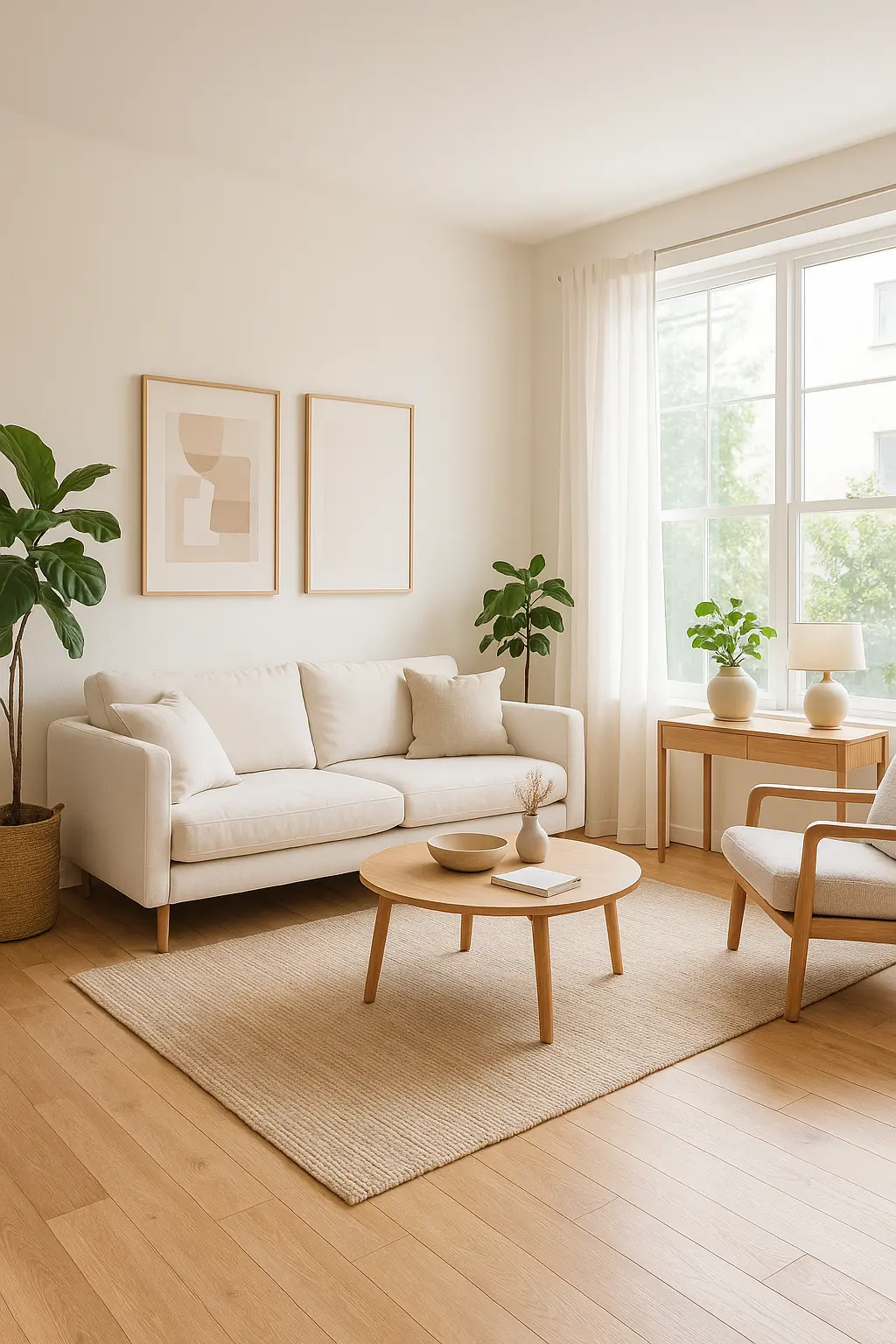
My checklist
-
Sofa:
deep enough to curl up, not to sink.
-
Chairs:
check back height—some only look good.
-
Tables:
wood warms, glass lightens, and stone adds edge.
-
Storage:
closed hides life, open shows personality.
I always add one vintage find; it breaks the showroom feel.
Textures That Wake Up a Room
Flat equals dull. I mix at least three textures—soft (velvet or brushed cotton), nubby (linen or bouclé), and smooth (leather or lacquer).
Patterns stay calm: one large, one small, maybe stripes.
Durability notes:
Performance fabric for kids or pets, washable covers when possible, and if I crave white, I choose off-white. Sanity saved.
custom wall decor
Art hangs at eye level.
For a gallery wall, I start with one large piece, arrange everything on the floor, photograph, adjust, and then hang.
A touch of asymmetry keeps it human.
Fast upgrades
- Paint the ceiling a shade lighter than the walls.
- Add a picture light for instant polish.
- Use substantial frames—thin ones fade away.
Storage That Works
Storage should match real life, not a catalog.
Shoes everywhere? Closed bench.
Mail chaos? Dedicated drawer.
Blankets roaming? Lidded basket—instant “organized” look.
Kitchen sanity: drawer inserts, a tray for oils, and one honest bowl for keys near the door.
Small Spaces and Open Plans
Small rooms need fewer, larger items—too many tiny pieces shrink a space.
Visible legs on furniture show more floor.
One big mirror beats three small ones.
Open layouts feel unified when one element repeats—black metal, oak, or woven texture tying it all together.
Real Life—Kids, Pets, Guests
Spills happen.
I plan for jelly on fabric and fur on cushions.
Main seating gets stain-resistant covers; delicate textures live on throws.
Matching upholstery to pet fur works wonders.
Guests appreciate a basket with towels and a charger—a small gesture, big comfort.
Budget That Bends
I divide costs into three ways:
-
Invest well:
sofa, mattress, dining chairs—everyday essentials.
-
Spend smart:
lamps, rugs, side tables—shop sales.
-
Spend light:
pillows, trays, accents—trends change fast.
I track prices, arrival dates, and risks. The focal point is the tables, which remain understated and always cover surprises—they always show up.
My Order of Operations
This sequence saves both time and energy:
- Define feelings and palette.
- Measure and plan the layout.
- Choose the rug and sofa first.
- Sort lighting early.
- Pick paint after fabrics arrive.
- Add tables, storage, and art.
- Style with plants, books, and textiles.
- Allow it to settle for two weeks, then make adjustments.
One major change a week keeps pace steady and the budget safe.
Mistakes I Fixed
- I used to purchase items without first measuring, but now I make sure to tape the outlines first.
- Choosing paint first → fabrics lead; painting follows.
- There are too many finishes to choose from, including two metals and one wood tone.
- Harsh lighting → dimmers everywhere.
- Small rugs: size up; space feels generous.
- All-new everything → I keep one old item for my soul.
Room Snapshots
Living Room: Begin with a rug and seating. Add two lamps before the wall art. Use tall plants to balance a TV or fireplace. Hang curtains high and wide to enlarge windows.
Dining Area: Choose chairs comfortable for real meals. Round tables spark conversation. Hang pendants 30–34 inches above the tabletop.
Kitchen: Keep counters clear—display one attractive board, and store the rest. A soft runner and under-cabinet lights make mornings kind.
Bedroom: Invest in a mattress and bedding. Consider adding two lamps, drawers for clutter storage, calming artwork, and a bench if there is enough space.
Bathroom: Replace builder mirrors with framed ones. Add sconces at eye level. Group products in trays and use a quick-dry mat.
Entry: Provide keys and mail a landing spot, add a mirror, and use a washable rug to catch dirt early.
Materials and Finishes
I pair textures—wood with metal, stone with linen, and glass with rattan.
If a corner feels flat, I contrast sheen: matte beside gloss, soft beside sleek.
One deliberate shift can wake a dull spot.
Plants and Personal Touches
Tall plants soften edges; small ones liven shelves.
Where light fails, I mix real and faux.
Personal pieces—photos, travel finds, local art—make the space genuinely mine.
Easy Upkeep
Weekly: fluff pillows, fold throws, wipe surfaces.
Monthly: dust shades, vacuum vents, check plants.
Seasonally: switch a few covers or accents—freshness without overspending.
Try It Today
Pick one room.
Write three feeling words.
Please remove five items that don’t fit.
Move one lamp.
Center one artwork.
Notice how it feels tonight and tomorrow.
Small moves reveal what matters.
Q & A—My Quick Answers About Home Interior Design
Q1: How can I refresh a room fast?
Declutter, adjust lighting, and restyle surfaces. One new lamp or textured throw can shift the entire mood.
Q2: How do I choose a color I won’t regret?
Test large samples in different lights. Decide after the fabrics arrive so the tones align.
Q3: What’s the first thing to buy for a new place?
Start with anchors—a sofa or bed—then layer smaller pieces once those settle.
Q4: How can a small apartment feel bigger?
Use fewer, larger furnishings, expose more floor, and mirror one wall—never more.
Q5: How do I mix styles with someone else?
Agree on shared feelings—like “warm and modern”—instead of strict labels.
Q6: What’s my number-one design rule?
Measure first. Everything else can flex; the wrong size never fits.
Final Thought
Home interior design isn’t about trends—it’s about comfort, balance, and mood.
When I stay true to my three words, buy what fits, and layer light and texture, my home supports work, rest, laughter, and life itself.
That’s success: rooms I genuinely love living in.
